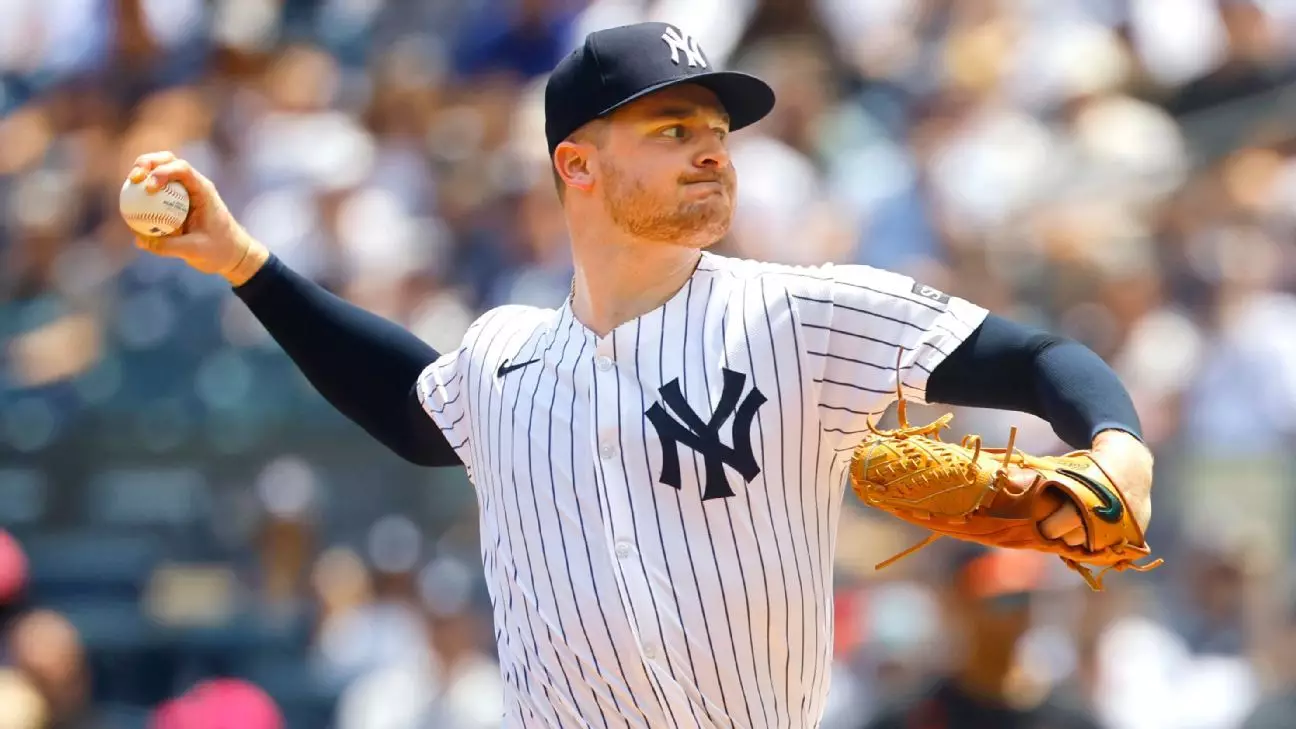The Yankees’ pitching staff has been besieged by misfortune this season, and the recent diagnosis regarding Clarke Schmidt only compounds their struggles. Schmidt, once seen as a promising cornerstone for the franchise’s rotation, now faces a harsh reality: the likely need for Tommy John surgery. This injury not only derails his 2024 ambitions but also raises questions about the long-term durability of the Yankees’ starting staff. His torn ulnar collateral ligament (UCL)—discovered after an MRI, following discomfort during a game—symbolizes the fragile nature of pitcher health in the modern game. It’s a reminder that even talented young pitchers are vulnerable to the brutal physical toll of the sport, a toll compounded by the high expectations placed on them.
Schmidt’s impressive 3.32 ERA in 14 starts this season showcased his talent and potential. Yet, this setback crystallizes an uncomfortable truth: talent alone cannot guarantee longevity. His previous Tommy John surgery in 2017 underscores the intrinsic risks of the pitcher’s craft, and this latest injury might well cost him a significant chunk of his career momentum. The Yankees now must navigate a complex ecosystem of replacements, scrambling to patch their rotation with limited reliable options. Schmidt’s injury is not just a personal tragedy; it’s a strategic vulnerability that exposes the fragility of their roster as a whole.
Impact on the Yankees’ Rotation Strategy and Future Plans
The Yankees’ rotation, once considered a strength, now resembles a house of cards. With Gerrit Cole sidelined for the season after his own Tommy John procedure and Luis Gil’s injury leaving him inactive, the already depleted staff faces an urgent overhaul. The absence of Schmidt, who had been pitching well and providing stability, leaves a glaring void. This situation forces Yankees management and coaching staff to pivot quickly, seeking external reinforcements just before the trade deadline.
Internal options such as Carlos Carrasco, Allan Winans, and prospects like Cam Schlittler represent stopgap solutions at best. Carrasco’s veteran experience might help stabilize the rotation temporarily, but he’s far from the dominant arm the Yankees need to contend. Schlittler’s recent promotion to Triple-A signals hope for future depth, yet he’s an unproven commodity at this stage. The Yankees will likely look beyond their farm system, exploring trades or waiver-wire additions to fill the critical gaps. The urgency underscores what many teams have come to understand: relying solely on internal development is no longer sufficient in a climate where injuries and attrition are common.
The strategic implications extend beyond mere replacement. This injury crisis underscores a broader predicament: how can the Yankees develop and maintain a resilient pitching staff amid the physical toll of the game? The club’s emphasis on high-velocity arms and fast-paced pitching styles might need reevaluation. Investing in injury prevention, workload management, and perhaps even more conservative development philosophies could become necessary to avoid future catastrophes.
Reflecting on the Broader Context: Is It a Systemic Issue?
Clarke Schmidt’s injury, while devastating for the Yankees, is emblematic of a systemic issue in professional baseball. The modern game’s obsession with velocity and strain often pushes pitchers past their physical limits. In an era where workload management is theoretically prioritized, injuries still occur with alarming frequency. Schmidt’s case highlights the inherent unpredictability of pitching careers and the need for organizational introspection.
From a management perspective, the Yankees’ situation exposes a failure to adequately insulate their pitching pipeline from such setbacks. Relying on lesser-known veterans and prospects to fill in for an injured star is a short-term fix that invites long-term instability. It begs the question: have organizations become too enamored with raw stuff and strikeout capacity at the expense of durability and health?
Moreover, the timing couldn’t be worse for the Yankees. With a July 31 trade deadline looming, they are under immense pressure to make strategic moves that could define their season. Will they gamble on mid-tier acquisitions, or will they take a longer view and prioritize sustainable health over quick fixes? The injury to Schmidt is a stark reminder that even promising young arms can disappear from the radar for extended periods, sometimes permanently.
Introducing more rigorous health protocols, rethinking pitching workloads, and fostering a culture that values long-term durability over short-term success could be the antidotes to recurrent injuries. Yet, whether the Yankees and other clubs will heed these lessons remains to be seen. As Schmidt’s future hangs in the balance, it’s clear that pitcher health is no longer just a matter of luck but a crucial element of strategic planning.
The ongoing injury saga has cast a shadow over the Yankees’ aspirations, compelling them—and perhaps other teams—to confront the uncomfortable reality that talent alone cannot compensate for the physical risks embedded within the game.


Leave a Reply